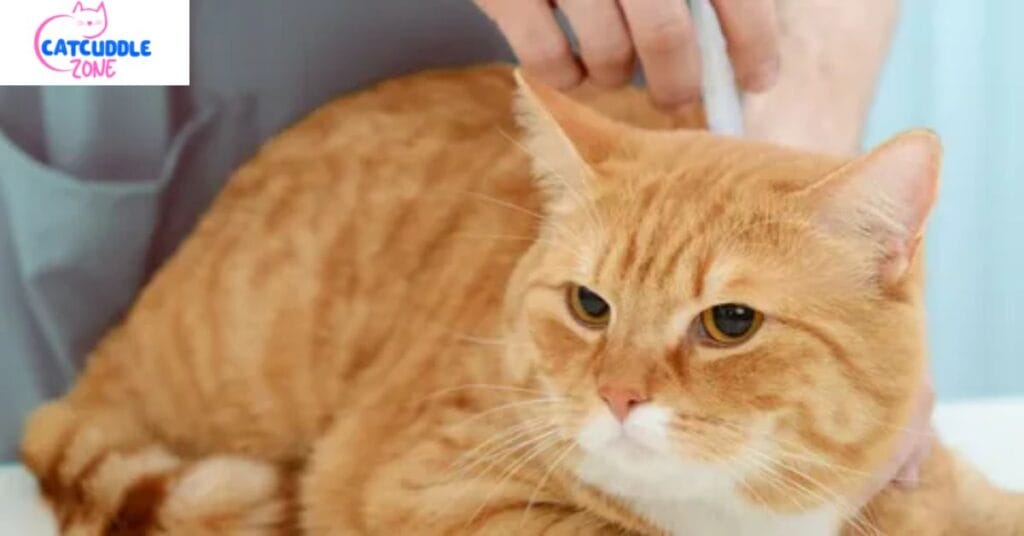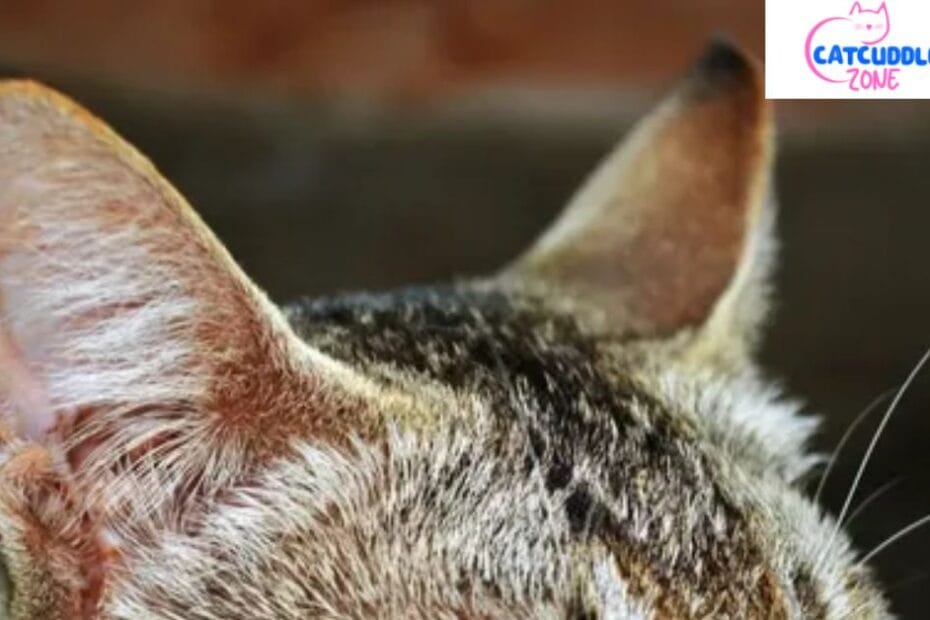If you’ve ever wondered, “Why are my cats ears warm?” you’re not alone. It’s a question many cat owners ask, especially when their feline seems fine otherwise. While it can be normal, warm cat ears vary depending on your cat’s behavior and health. A slightly elevated cat ear temperature is often harmless, especially if your pet is active and alert.
However, sometimes it may be linked to cat overheating symptoms or infection. Understanding the cat’s body temperature normal range and signs of distress will help you decide whether your cat needs care or just a little shade.
Are Warm Ears Normal in Cats?
Cats possess a lower temperature than dogs, but colder than humans. Whereas the average temperature of human beings remains at 98.6 degrees Fahrenheit, the average cat body temperature lies between 101-102.5 degrees Fahrenheit. Therefore, when the ears of your cat feel warm, it may be entirely normal. This natural heat difference is what gives “warm cat ears meaning in most healthy pets.
Do cats always need to have hot ears? Not really. Being slightly warm is ok. But when the ears are very warm and your cat looks uncomfy or ill, then it may be simply more than plain body heat. Hot ears may also become one of the signs of sickness of cats, particularly with the addition of other symptoms such as tiredness, vomiting or an absence of appetite.
Common Reasons for Warm Cat Ears
Warm ears can happen for everyday reasons. Sometimes, it’s just the way a cat regulates heat. Ears, paws, and noses release extra warmth. If your cat has been lying in the sun or just finished zooming around the house, you may notice their ears feel hotter than usual. This is the body’s way of cooling down and is not a concern. It’s part of how cat ears temperature in changing weather.
Seasonal shifts also affect ear warmth. In the summer, cats tend to have warmer extremities as their bodies work harder to stay cool. These changes do not usually mean your cat is sick. It is just their biology responding to heat. However, if you notice cat overheating symptoms like panting or drooling, make sure they have shade and fresh water. Keep an eye on cat ear health during extreme seasons.
Medical Causes of Warm Ears in Cats
If ear warmth comes with signs of discomfort, the reason might be medical. One cause is seasonal allergies in cats or even food sensitivities. These can lead to inflamed ears. Itching, licking, sneezing, and watery eyes are common feline allergy symptoms. Allergies make the ears hot due to inflammation and blood flow changes.
Another cause could be an infection or a parasite. Warm ears often appear in cases of cat earwax buildup or mites. These are parasite problems in cats and should be taken seriously. Symptoms of ear infection in cats include red ears, constant head shaking, or a bad smell. You might notice your cat scratching its ears and shaking its head more than usual. These can be signs of a cat ear infection that need vet care. Don’t ignore signs like cat ear odor causes or unusual discharge.
How to Check if Your Cat Has a Fever
A cat with a fever may have hot ears, but that’s just one clue. Other cat fever signs include less appetite, hiding, or acting strangely. A sick cat might sleep more or show signs like diarrhea or vomiting. These are all warm ears in sick cats indicators.
It is useful to know how to check a cat’s temperature. A rectal thermometer is the most accurate one. It may not be comfortable to the two of you, but it reads the best. The temperature might be more than 103.5°F o in which case it is a fever. This should be combined with other symptoms to confirm sickness. Use the table below to understand what to look for:
| Temperature (F) | Meaning |
| 101 – 102.5 | Normal Range (No concern) |
| 102.6 – 103.5 | Mild Fever (Monitor closely) |
| 103.6 and above | High Fever (Call your vet) |
Symptoms That Require a Vet Visit
Some signs mean you should stop guessing and call your vet. For example, if your cat is not eating and has hot ears, that’s a concern. Other symptoms like vomiting, diarrhea, or hiding could mean a more serious condition. These are major symptoms of illness in cats.
Another red flag is behavior. If your cat is acting normal but its ears are hot, you might wait. But if your cat becomes tired, moody, or stops grooming, it’s time to act. These could be hot ears and lethargy in cats, which point to an infection, fever, or something worse. When in doubt, think about when to take a cat to the vet for warm ears seriously. Early care makes a big difference.
How to Treat Warm or Infected Cat Ears
Mild heat in the ears doesn’t always need treatment. But if there are signs of infection or discomfort, you need a plan. For treating cat ear mites, your vet will likely give special ear drops or oral meds. Avoid using home remedies without advice. Wrong treatment may cause more harm than help.
Infections need fast action. Your vet might clean the ears and prescribe antibiotics. This is part of veterinary care for cats with hot ears. Proper medication can stop pain and prevent long-term hearing issues. Do not delay treatment for signs of a cat ear infection. Getting care early is the key to full recovery.
Preventive Tips to Keep Your Cat’s Ears Healthy
Keeping ears clean and dry is the best prevention. Use vet-approved solutions to gently wipe the outer ear if needed. Never insert anything deep inside. Regular grooming also helps you spot changes early. Ear checks should be a routine part of your cat’s ear health care.
To minimize feline allergy symptoms, exposure of the patrons to allergens is scarce during allergy seasons. This is also to keep dirt dirt-free home so as not to accumulate earwax or other irritants. A clean environment and good hygiene prevent most of the symptoms that are caused by cat overheating and infections. The golden rule is always prevention rather than cure.

When Should You Be Concerned? (Red Flags)
If your cat has warm ears plus other strange symptoms, you need to pay attention. If there’s blood, thick discharge, or foul smell, it’s likely serious. These are strong signs of a cat ear infection and should not be ignored.
Red flags include a cat that hides, stops eating, or becomes aggressive. These are not just mood swings. They can be connected to cat fever vs normal heat, especially with hot ears. Take these clues seriously to avoid long-term problems. Always think of when to worry about cat’s ears when unusual signs appear.
Final Thoughts: Don’t Panic, But Stay Observant
Not having a warm cat ear is not always a cause for panic. Sometimes these dogs can get them naturally from their body heat. If warmth is conjunct with other signs, that can be an unhealthy situation. Knowing the difference is what makes you a good and responsible pet parent.
Monitor the changes carefully and be quick to respond when the symptoms exacerbate. Look at the cat scratching of ears and shaking of head, poor appetite, or smell. In case you are not certain, a one-time visit can prevent a severe ailment in your cat. Always keep in mind a home remedy for warm cat ears is sometimes not the solution needed; rather, visiting a vet is.
(FAQs)
Why are my cat’s ears warm but they seem fine?
Your cat may just be regulating heat. Cat ears temperature rises after sunbathing, sleeping, or playing, and it’s usually normal.
Can warm cat ears be a sign of illness?
Yes, warm ears in sick cats can signal fever, infection, or allergies if combined with other symptoms like vomiting or lethargy.
What is the normal temperature for a cat?
The cat body temperature normal range is 101°F to 102.5°F. Anything higher could mean your cat has a fever.
How do I know if my cat has ear mites?
Itchy ears in cats, dark discharge, and head shaking are common signs. These are classic parasite problems in cats.
When should I worry about warm cat ears?
If you notice cat not eating and has hot ears, or signs of illness, it’s time to contact your vet.
